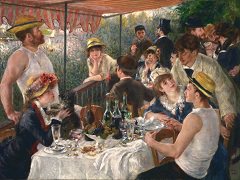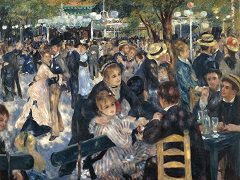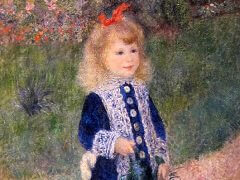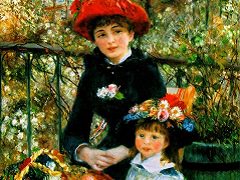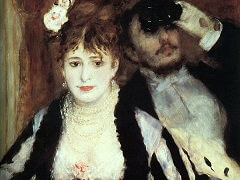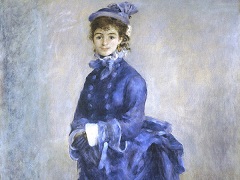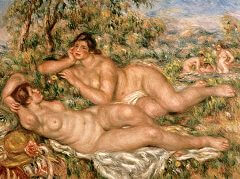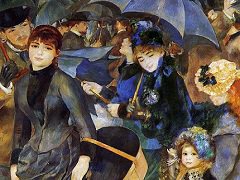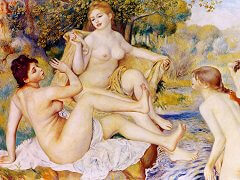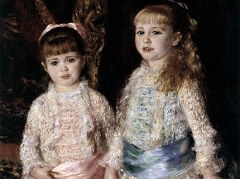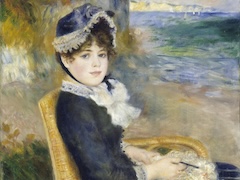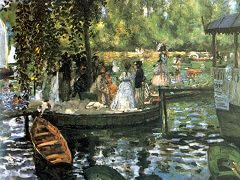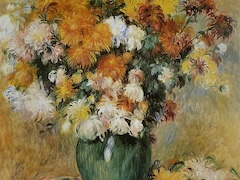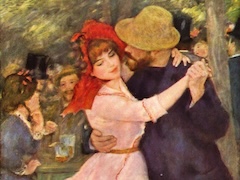In the Meadow - by Pierre-Auguste Renoir
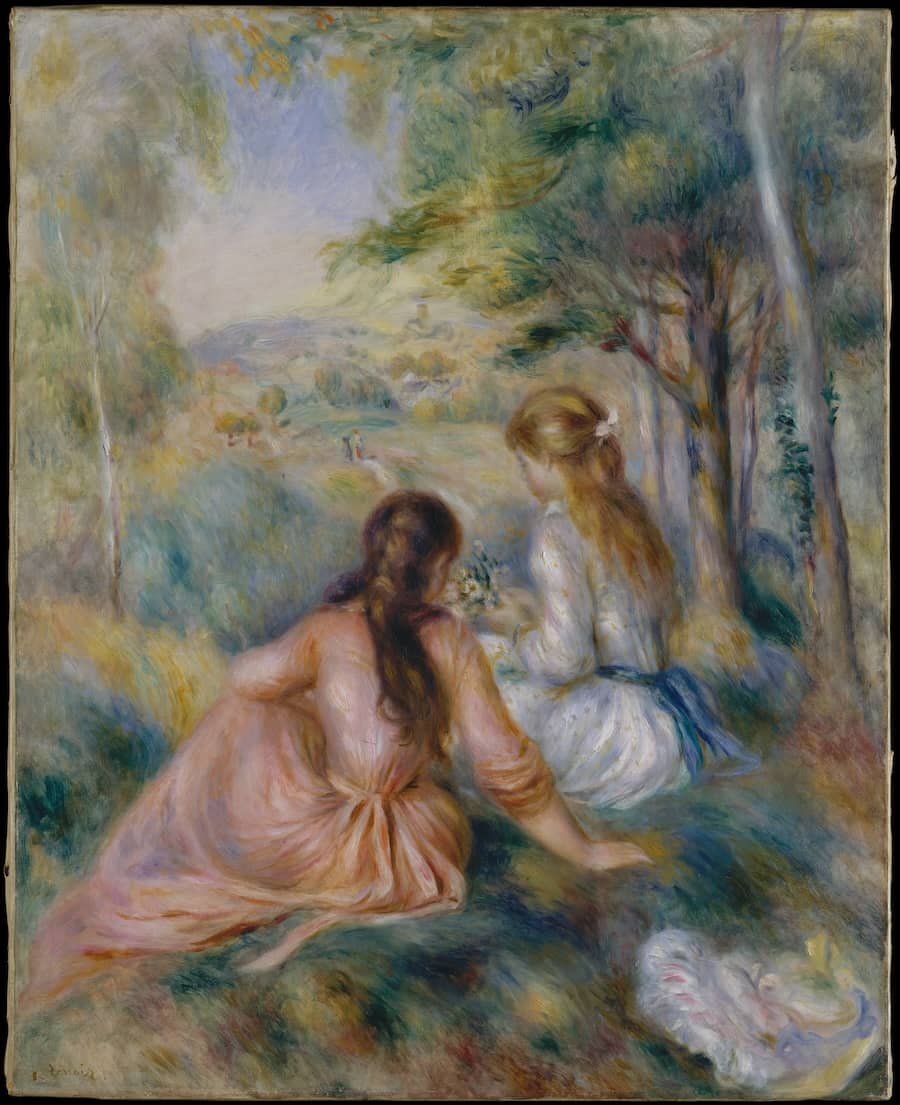
At this time, Renoir was emerging from his periode aigre. He returned temporarily to Impressionism, but it was to an Impressionism wholly personal and original. With a new richness of color, and a new vivacity in his brushwork, he paints thinly over light ground, creating a silken, undulant surface, like fine grass delicately agitated by a summer breeze. The effect is one of peculiar luminosity, as though, beneath the thin but complex colors, there was light and life. And although the figures are drawn with a fairly precise line - recalling his work of the 1880s - we still remember pictures like this one for their color.
The painting has a simple basic structure - a kind of "X," the two diagonals of which contrast in every respect. From the lower right to upper left, a succession of bland colors moves from the hat in the corner, through the white figure, and into the distant landscape and sky; this diagonal lies both on the surface of the design and in depth. The other side of this "X" stays near the surface; it is made up of fuller colors, purples and coral. It follows the other girl's dress, from the lower left corner up into the trees, top right. Exquisite color contrasts are set up in all sections.
At the crossing of the "X," Renoir has placed a little bouquet of flowers in the hand of one of the girls. Again we are struck by the novelty - but complete naturalness - of the poses in Renoir's canvases; the girls have their backs to the observer, and they provide a human, but not personal, element.
Renoir's work in this period is sometimes criticized for "excessive softness of objects," as, for instance, in the fore-1 ground areas and in the trees. This would seem to be less a criticism than a misunderstanding. Renoir was after precisely that effect of softness and fluidity, that melting qualihl that permeates the atmosphere on a warm summer day; the! pleasant lassitude of such a day is beautifully caught here.

